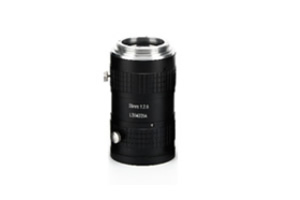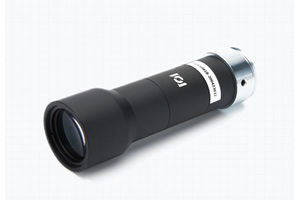Did you ever wonder how the cameras manage to take such amazingly sharp and stunning pictures? The solution is Telecentric lens. Because they enable a better vision to camera and clear-cut images. One of the lead companies for these is CHIOPT, and their telecentric lenses are helping businesses from different industries to have a perfect, clear picture. This sucker is a large topic so in this article, we are going to learn some more about what they are, how do they work and where can it help the most like manufacturing and researchiesta!
Why Use A Telecentric Lens and How DOES It Work?
Telecentric lenses — These are special lenses created to make sure light comes into the camera in straight lines. This is different from standard lenses that give blurry pictures or may reduce quality in case the object you are shooting up close or far away. Technical telecentric lenses ensure the size of an element is consistent, regardless of where it appears in the camera friend. It is a wonderful gift to be able to snap the dimension of cleanliness and always get it right. That is why, many businesses such as factories and research laboratories employ telecentric lenses.
So, how do these lenses work? Then they straighten the light. The light is aligned in collinear lines of travel in a process thats called Collimating. Once the light is corrected, that light moves to the center of the lens passes through another lens and series of confirms before it reaches the camera sensor. Since the lenses are telecentric the light reaches from the specimen in a perfect angle to the camera sensor. This is very helpful for producing sharp images with virtually no distortion — a must when taking precise measurements.

The Role of Telecentric Lenses when Measuring
Telecentric lenses are used in factories and also during inspections as they help people to measure the accurate size of an object. These lenses eliminate blurriness that occurs when objects are too near or far from an individual, allowing workers to measure items accurately. In jobs where mistakes, even small ones lead to big problems this accuracy is crucial. In some industries — aerospace or medical devices or computer chip manufacturing, for instance — precision is vital.
In the science of measurement, metrology – telecentric lens are also very beneficial. They can produce sharp images that show the true size of objects, wherever they are in the camera’s field of view. Being able to do so is especially important in the car manufacturing business that requires parts from outside suppliers to be compatible with all other parts.
The role of telecentric lenses in factories and inspections
Telecentric Lenses – A Game Changer in Factory and Inspection applications These are high resolution imagery which aids in error diagnosis in early phases of manufacturing. Early detection means products can be brought to market sooner, at lower cost and better quality. These are telecentric lenses, which allow manufacturers to confirm that everything is in order and that their products meet the highest requirements.
For example, in the computer chip industry, telecentric lenses are used to inspect silicon wafers for defects. Computer chips are made from these wafers and any imperfections can reduce chip yields that pose issues in electronic production. This ensures absolute defect measurement and classification of wafers-quality that guarantees only the best wafers made to be used in production. This QA approach is what ensures that electronic devices deliver superior quality, are ultimately reliable and will cost less time to repair for consumers.
Considerations for Telecentric Lenses
Though they are a start, telecentric lenses, as mentioned above, do not solve all problems. One of the biggest critical things is ensure you get good lens. Because telecentric lenses use parallel light, even if the lens is slightly off center it can end up with a couple issues like blurring or distortion in the images. You should make sure everything is correctly setup for the best image quality.
Lighting conditions are also something to keep in mind. For telecentric lenses, you need to have quite good lighting. However, if you also want to get the best results when birding, then what kind of lighting you need for the particular subject you wish to view is paramount. This is important to note as telecentric lenses have a limited field of view compared to standard lenses and higher magnification. All of these things will ensure that you get the best performance from a telecentric lens.

The Telecentric Lenses in Research Going Forward
Their use in research is now catching up with the growing availability of telecentric lenses. In materials science, biotechnology and nanotechnology, among other fields, it is crucial for scientists and researchers to size up certain tiny or fragile objects.
For example, in biotechnology scientists use telecentric lenses to observe how red blood cells deform under pressure. This information is critical to treating diseases such as sickle cell anemia. In the same way, telecentric lenses are used to monitor how cells move over time to see if we can learn about disease processes and cellular motility.
The telecentric lenses are very important in looking at very high data in the nanotechnology field. For the design and development of innovative materials with new properties, like improved mechanical strength or extensive electrical conductivity. Telecentric lenses are used by scientists to gain important new knowledge on the behaviour of materials at nanoscale that will help inform further uses for technology and development of materials.
So, it is justified in saying specialized lens and telecentric lenses and its use are one of the brilliant thing of technology which helps us view things with accuracy and perfection. CHIOPT is proud to manufacture such lenses that help numerous fields, from manufacturing industry to research. Telecentric lenses allow us to see the world in a whole new light, creating detailed images and providing precise measurements that help ensure better product quality and research outcomes.



0 条评论